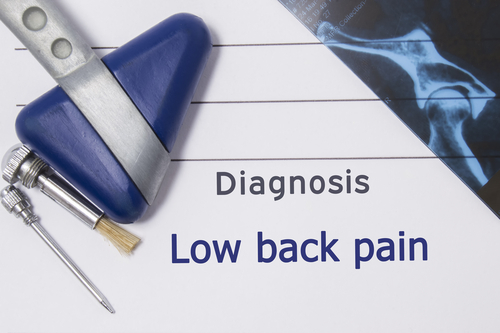Non-invasive treatments for low back pain: CPG (American College of Physicians)
M3 India Newsdesk Nov 01, 2017
Low back pain, a disorder with many possible etiologies, occurs in varied groups of population, and has many definitions; American College of Physicians provide clinical recommendations for noninvasive treatment of low back pain.

Low back pain is also one of the most common cause of visits to a physician, as indicated by studies. The treatment and clinical management of low back pain vary among healthcare professionals. Therefore, there is a need to maintain consistency in the clinical management of low back pain.
Low back pain can be acute, sub-acute, or chronic. As per American College of Physicians (ACP), low back pain is classified into:
Acute low back pain (< 4 weeks), Sub-acute low back pain (4 – 12 weeks), Chronic low back pain (> 12 weeks), Radicular low back pain (low pain due to nerve root impingement)
This article briefly elucidates how pharmacologic and non-pharmacologic treatments help in treating acute, sub-acute and chronic low back pain based on a clinical practice guideline published by ACP.
Pharmacological treatment
Acute or sub-acute low back pain
NSAIDs show little improvement in the pain intensity when given to patients to treat acute or sub-acute low back pain. Skeletal muscle relaxants show short-term improvement in pain relief of acute or sub-acute low back pain.
The other drugs, such as acetaminophen, corticosteroids, antidepressants, benzodiazepines, and opioids have proven to have no role in relieving acute or sub-acute low back pain.
Chronic low back pain
NSAIDs and opioids such as tramadol can be used for short-term pain relief and tends to improve function in people with chronic low back pain. In addition, benzodiazepines brings about pain relief in 5 – 7 days and provides overall relief at 10 – 14 days.
Radicular low back pain
None of the pharmacological treatments such as benzodiazepines, corticosteroids, NSAIDs, and antidepressants are effective to treat radicular low back pain.
Non-pharmacological treatment
Acute or sub-acute low back pain
Low-level laser therapy (LLLT) can decrease pain intensity and moderately improves the function. Superficial heat wrap provides better relief than acetaminophen and ibuprofen after 1 – 2 days.
Massage and acupuncture provide short-term pain relief when compared to other interventions, such as exercise therapy, manipulation, physiotherapy, and relaxation therapy.
Chronic low back pain
Non-pharmacological treatments can be used for pain relief in people affected with chronic low back pain. These nonpharmacological treatments include:
Yoga, Motor control exercise, Exercise, Tai Chi, Low-level laser therapy, Massage along with exercise or usual care, Cognitive behavioral therapy, Spinal manipulation
Radicular low back pain
Nonpharmacological treatments like exercise show little improvement in pain relief. No evidence suggests beneficial role of traction and other nonpharmacological therapies in pain relief.
Recommendations by ACP
- Very often a majority of patients with acute and sub-acute low back pain improves over time and hence ACP recommends physicians to select nonpharmacological treatment. Such non-pharmacological treatments may include superficial heat, acupuncture, spinal manipulation. If pharmacological treatment is desired, healthcare personnel can recommend NSAIDs or skeletal muscle relaxants.
- ACP strongly recommends healthcare professionals to prefer nonpharmacological treatments such as superficial heat, massage, acupuncture, or spinal manipulation to treat chronic low back pain.
- In chronic low back pain patients with inadequate response to nonpharmacological treatments, ACP recommends physicians to prescribe NSAIDs as first-line therapy, or duloxetine or tramadol as a second-line therapy.
Therefore, ACP suggests that healthcare professionals should assure that acute or sub-acute low back pain improves over time, irrespective of treatment. For chronic low back pain, clinicians should initially prescribe the treatments that have fewest harmful effects or lower costs and should avoid prescribing expensive or harmful medications or medications that were proven not to be effective.
-
Exclusive Write-ups & Webinars by KOLs
-
Daily Quiz by specialty
-
Paid Market Research Surveys
-
Case discussions, News & Journals' summaries